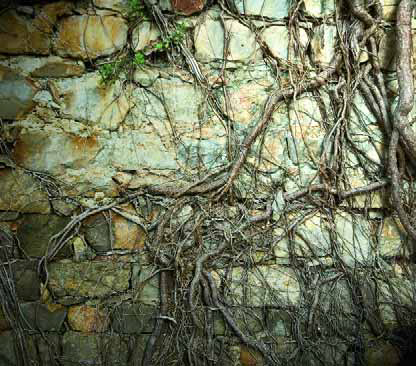Landscape, Plants, Hardscape & Decks
The fact that the vast majority of our landscapes exist on the ground floor has posed a challenge as city dwelling has become more popular: Relatively few urbanites are lucky enough to have ground-floor garden spaces to work with, but that in no way diminishes their desire to include garden spaces as components of their upper-floor environments. Even without land for plants, people still want to come home to attractive gardens at day's end. Although the first roof gardens date back to the Hanging Gardens of Babylon, city dwellers with only rooftop and balcony spaces at their disposal have been forced to get innovative, developing creative and sometimes highly unusual solutions. Hence the emergence of "roof gardens," which often combine spectacular distant views and dramatic cityscapes with creative hardscape and planting treatments - works of art that expand livable space as well as the
If you've been involved in major construction projects - initial work or renovations - chances are good that you've come across the need for retaining walls. In many cases, even the simple leveling of a site will require some type of retaining structure to hold back the soil - whether you're cutting fill out and need to support the slope that remains or filling an area and need to keep the new material from washing away. No matter what site we're talking about, retaining walls have one purpose: to hold something back. Whether you need to terrace a sloped yard, hold up a parking lot or
It's a plain fact: Few designers weigh maintenance as heavily as other elements of a design when creating gardens for their clients. Most will routinely ask whether the client wants a low-maintenance environment or one that requires a little more work and may yield a greater abundance of flowers or other desirable features, but the consideration typically ends there. And this is so despite the fact that by leaving maintenance out at the design level, landshapers often doom themselves to
Lots of us landshapers hear voices. The longer we're around, the clearer those voices become and the more we trust them. "Don't take this job," they'll say. "You can't make this look good. Do you really want to be known for this project?" For the most part, these internal voices perform a valuable service in keeping us out of harm's way. Every once in a while, however, I find myself
From the moment I set foot on this site perched on the bluffs at Del Mar, Calif., I just knew I would be the designer chosen to develop the garden: I was energized simply by being there and, more important, was at ease with the owners from the start. Immediately noticeable was the way the whole property sloped down from street level to the top of
On just about any site, we run into hidden obstacles - everything from underground pipes or leftover debris from other construction to myriad other surprises - and many of them are easily dealt with either by removing the barriers or redirecting things around them. But what happens when the obstacle is alive and growing and you can't remove it or escape from it? In these situations, you have to do your research, get creative and, above all, take the matter seriously. Case in point is a garden I'm designing for a project with David Tisherman - the one discussed previously where I'm developing a white
On just about any site, we run into hidden obstacles - everything from underground pipes or leftover debris from other construction to myriad other surprises - and many of them are easily dealt with either by removing the barriers or redirecting things around them. But what happens when the obstacle is alive and growing and you can't remove it or escape from it? In these situations, you have to do your research, get creative and, above all, take the matter seriously. Case in point is a garden I'm designing for a project with David Tisherman - the one discussed previously where I'm developing a white
It was an unusual time to be thinking about work, but there I was on a late-August morning, and Peak's Island off the coast of Maine was in glorious summer form. Small enough to walk around in an hour or so, the island is filled with delightful, charming summer cottages - not a "McMansion" in sight. In the early light, my thoughts had been silenced as I savored the beauty of the coastal wetlands and meadows filled with wildflowers, grasses and sedge. I was totally absorbed by the
We landshapers can and should attach a dollar figure to our knowledge, experience and integrity. That's a lesson I had to learn the hard way. About fifteen years ago, I was in need of a new dump truck for my growing business. I wasn't rich, so I decided to buy a used vehicle and found one in the local truck-trader newspaper. After looking at the truck with my trusty mechanic, I made an offer to my fellow landscape contractor, and he accepted. As we entered his office to complete the necessary paperwork, I came face-to-face with a landscape plan that looked very familiar: It was one I had drawn for potential clients. In fact, it was the colored plan I had presented to them only a few weeks earlier. I felt violated: That was my plan sitting on his desk. I asked him where he'd gotten it - an obvious and unnecessary question - and he told me that
Successful design is, I think, most readily achieved by linking a landscape to the architecture it accompanies. During my years as a landscape designer, however, I've seen far too many places where the landscape was apparently designed in a vacuum, displaying little to no connection to the home or any other structures on site. To the contrary, our job as landshapers is to




















